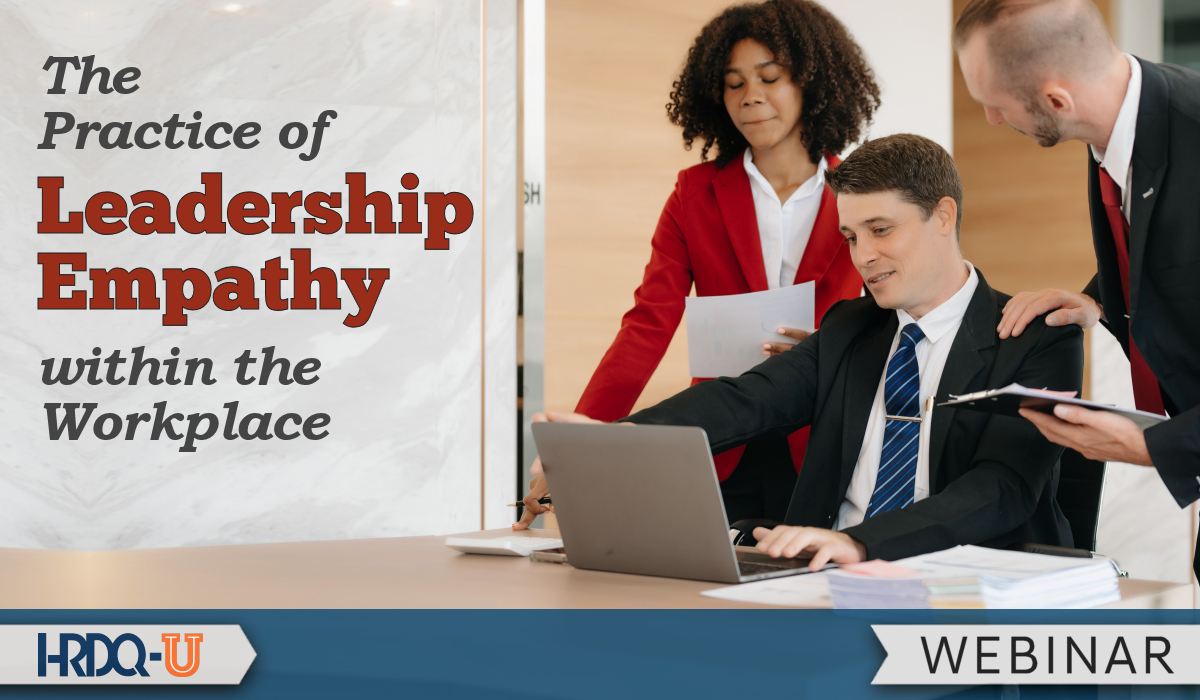- 827 Lincoln Ave. #B-10 West Chester, PA 19380
- support@hrdq.com
- +1-610-279-2002
Quick Links
Menu
Featured Topics
Menu
Total Results
We could not find what you're looking for. Please try again.No Record Found

We ALL long to be witnessed in our uniqueness, valued in our identity, and fully heard in our stories. We want to be and feel included in meaningful experiences that acknowledge our self-definition while being in the community. Essentially, we all want and need empathy for our basic survival. We are learning, against prevailing wisdom, that human nature is not to seek mere autonomy but to be in companionship with others. Thus, the necessary maneuver is to try to translate this human component within our work environments to ignite a spirit of creativity, innovation, and growth.
Please join Lisa Obianuju-Ike Alvarez as she walks you through this thought-stimulating session. You will learn how to leverage empathy in your work contexts to help you understand your employees well enough to work with them, communicate better, meet their needs with improved self-awareness, and connect across differences.


“Difficulties are meant to rouse, not discourage. The human spirit is to grow strong by conflict.”
– William Ellery Channing
Conflict is messy. We know this, acknowledge it, and are humbled by its necessity and proximity to our humanity. We believe that conflict is natural and is purposeful in moving us closer to the depths of another – their passions, cares, vulnerabilities, and all else that makes them genuine and uniquely imperfect.
At The EMOTIVE Lab, we facilitate an interior process in which teams become trained to diagnose and re-evaluate their own perception of conflict, making room for curiosity, empathy, and more mindful ways to connect across differences.
In this Conflict Management Workshop, you will learn how to:
Receive 15% off the Conflict Management Workshop OR 1 free 50-min Coaching session from our 5-month Leadership Coaching Package
Code: 1888EMOTIVELAB2023
Please share this code in the “message” portion of the contact form
Lisa Obianuju-Ike Alvarez is an educator, life coach, and group facilitator with ten years of training, counseling, and consulting experience. She is recognized for her unique approach to problem-solving and facilitating authentic and purposeful dialogue. She is a champion of and for the voices of the marginalized and possesses refined skills in helping individuals seek purpose from their daily regime.
As an intuitive leader, Lisa Is committed to helping individuals live and work with intention and challenge the self that prohibits appropriate risk-taking and completion of duty. She appreciates the shared journey of learning, exploring, and transforming with her clients.
Lisa holds a BA in psychology, an MA in counseling psychology, and a PsyD in organizational development. Her academic acquisitions and professional advancements illustrate her strive for people excellence and desire for lasting learning and change.
Learn more at www.theemotivelab.com
Training Tools for Developing Great People Skills
This event is sponsored by HRDQ. For 45 years HRDQ has provided research-based, off-the-shelf soft-skills training resources for classroom, virtual, and online training. From assessments and workshops to experiential hands-on games, HRDQ helps organizations improve performance, increase job satisfaction, and more.
Learn more at HRDQstore.com
“This really empowered me to continue mindfulness and empathetic management practices.”
– Jesus O.
“I love HRDQ sessions. They are a quick way, over my lunch hour, to keep my HR skills and knowledge fresh.”
– Andrea D.
“I enjoyed the presentation and it really got me to thinking about interactions within my own office setting”
– Tonjia B.

Sign up to be notified of upcoming live webinars, in-depth workshops, podcasts, blog posts, promotions and much more. Stay ahead of the curve and subscribe for FREE today!